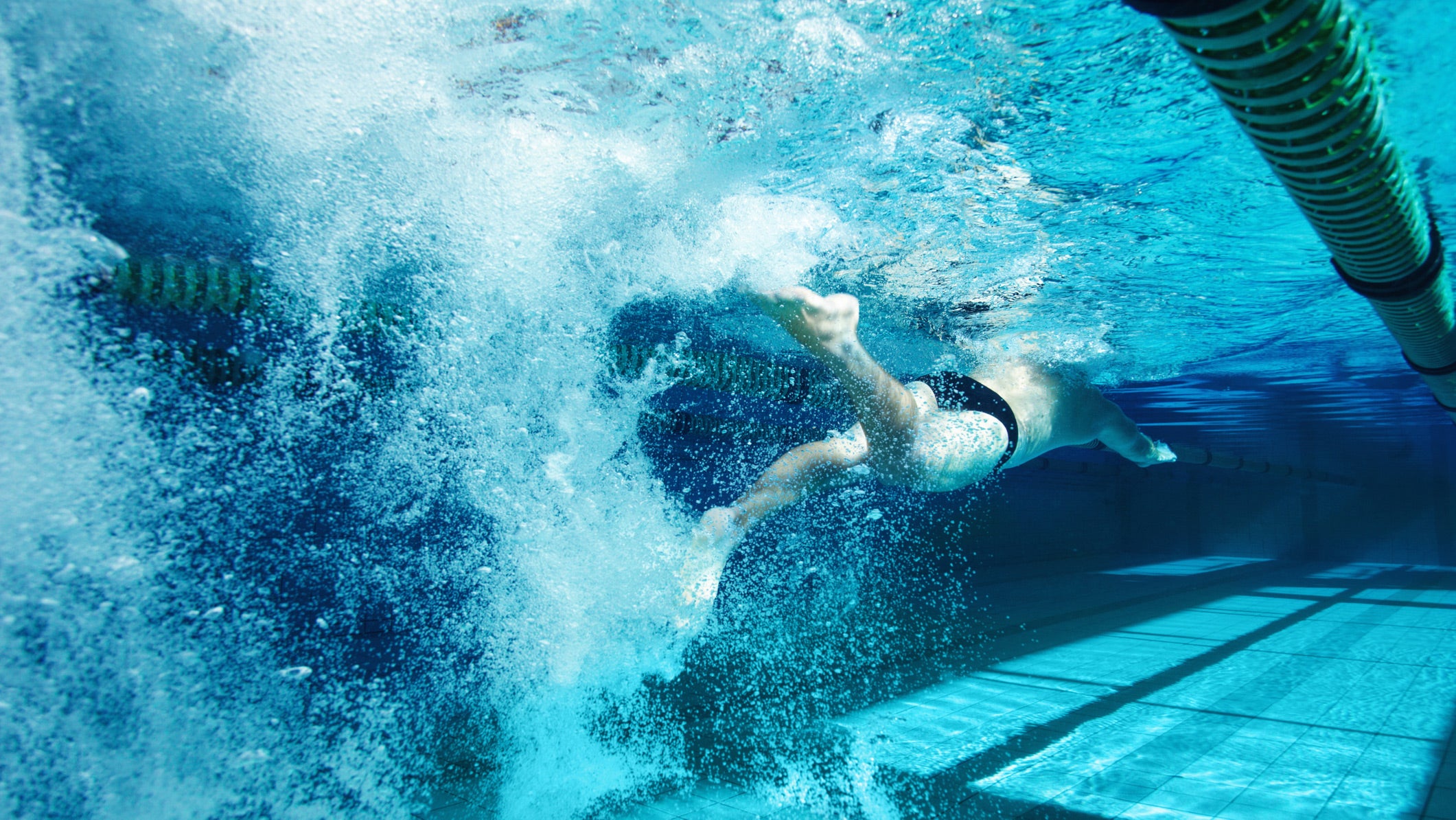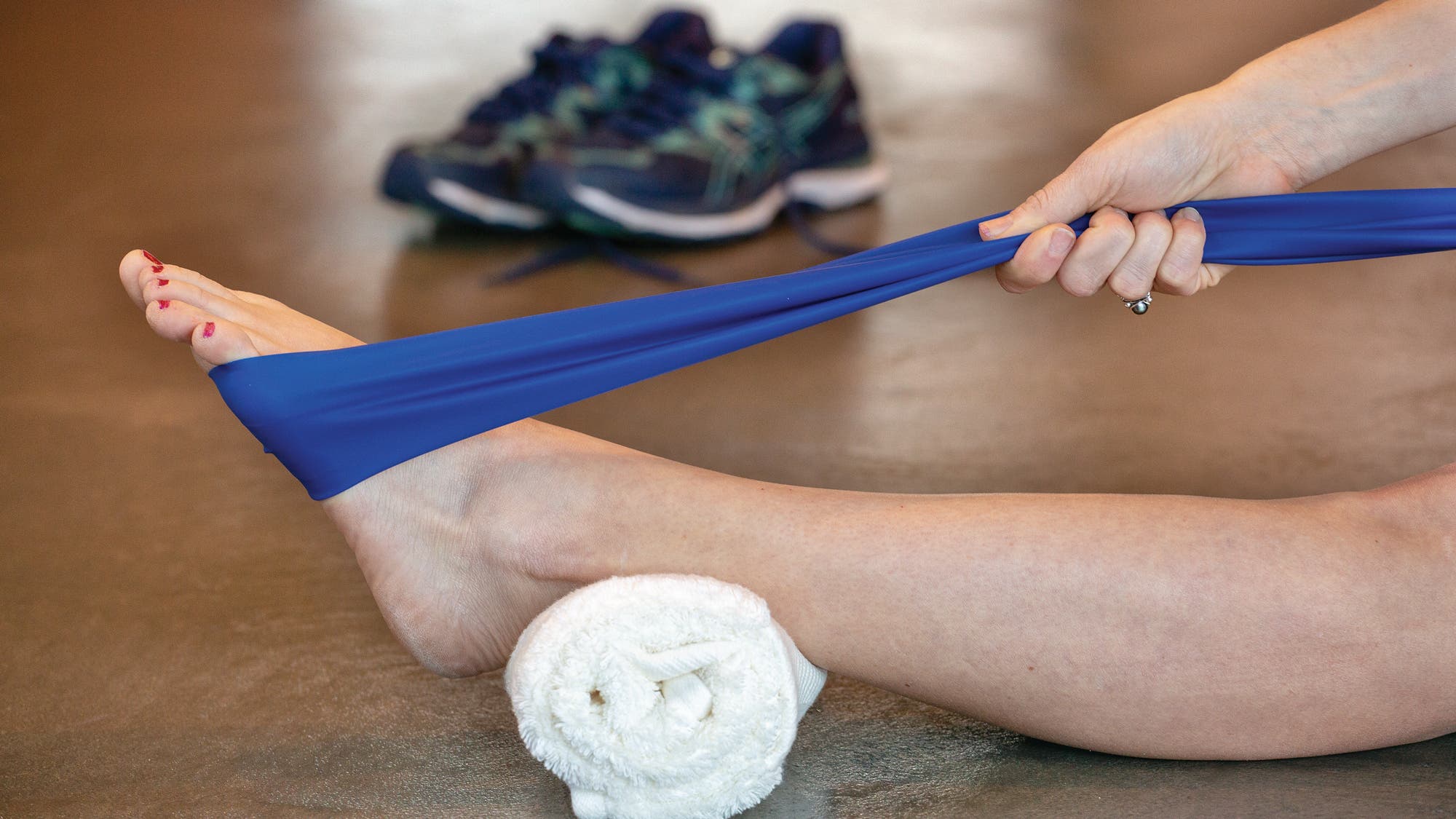Ask a Trainer: How Can I Increase Ankle Flexibility for Swimming?

(Photo: Getty Images)
For many athletes, increasing ankle flexibility will greatly help them swim. Joint mobility and muscle flexibility at the ankle play a vital role in the mechanics needed for a proper swim kick.
If you’re missing these essential ankle mechanics, you’re more likely to experience the infamous calf cramp. A lack of plantarflexion, or the ability to point the foot and toes downward, makes the ankles act as anchors. Without the ankles doing their job, you’ll have to work more from the knees and hips, causing a less efficient kick because you’re placing a higher workload on your body.
Your ankle may be lacking in plantarflexion for a few reasons:
- Poor mobility through the ankle joint.
- Lack of tissue length and flexibility of the gastrocnemius and soleus, collectively known as the calf muscles.
If either issue occurs, you’ll have to actively contract the calf muscle to point the toes down. Compared to other muscles, the gastrocnemius has a larger than normal amount of Type II fast-twitch muscle fibers, meaning the muscle is most efficient for short, anaerobic efforts. If this muscle is in a contracted state for a prolonged period to make up for a lack of plantarflexion, cramping in the calf will likely occur.
Increase ankle flexibility: Exercises
Here are some ways you can improve tissue length and joint mobility through the ankle:

Ankle flex with resistance
Sit on the floor with your legs straight, a resistance band around your foot, and a towel roll under your ankle.
With the band loose, point your toes away from you. Then with a taut band, pull back and slowly move your foot back toward you. Repeat for 3 sets of 10.
Half kneel stretch
Begin in a kneeling position. Slowly shift your weight down and backward until you feel a gentle stretch in your foot. Repeat for 2 sets of 20 reps on each leg.
Standing calf stretch on step
Begin by standing on a step with your heels hanging off the edge.
Slowly lower your heels toward the ground until you feel a stretch in the back of your lower legs and hold. Repeat 3 sets with 1-minute holds.
To stretch the deeper calf muscle, the soleus, put a slight bend in your knees – you’ll feel the stretch further down the leg. Repeat 3 sets with 1-minute holds.
Dr. Caitlin Glenn Sapp has a doctorate in physical therapy as well as a bachelor of science in exercise science. She also holds certifications as a USA Triathlon Level I certified coach and ACSMC personal trainer.